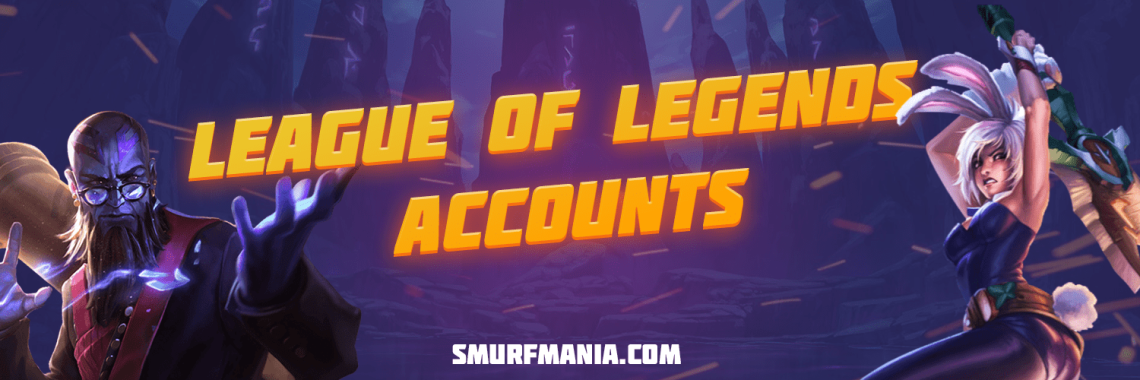What is Boosting in League of Legends?
Stuck in “Elo Hell”? Why Everyone’s Talking About Boosting
It’s a familiar story. You just lost another game. A match that felt winnable slipped through your fingers because of a teammate’s questionable decision. You’ve poured hours into ranked, you’re playing your heart out, but your rank icon feels permanently glued in place. Silver. Gold. It doesn’t matter. The feeling is the same—you’re stuck.
Thoughts race through your mind: “My teammates are holding me back,” “I play way better than my rank,” “This has to be a loser’s queue.” This state of frustration, known to every League of Legends player, has a name: “Elo Hell.”
It’s in these moments of pure tilt, when all your effort feels wasted, that a tempting, almost mythical solution appears on the horizon, whispered about in Discords and on forums—boosting. The word sounds like a magic key, capable of instantly unlocking the gates to high-elo, the coveted Victorious skins, and those shiny profile borders. It seems like a fast pass to prove to everyone (and yourself) that you belong higher.
The goal of this article is to give you an honest, comprehensive breakdown of Elo boosting. We’re not here to lecture or judge. Instead, we’re going to look at the facts together. What is boosting, really? What do Riot Games’ official rules say? What are you risking when you hand your account over to a stranger? And most importantly, is there a way to climb out of Elo Hell on your own terms, without breaking the rules and putting your account in danger? We get why you’re curious, and we’re here to walk you through it all so you can make an informed decision.
Ranking & Boosting Basics: How It All Works
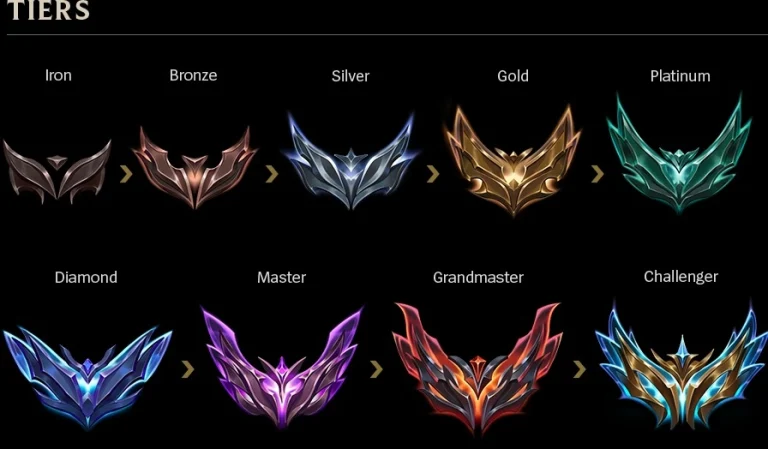
Before we dive into boosting, it’s crucial to understand how League’s ranking system actually functions. On the surface, it’s simple: win games, gain points; lose games, lose points. But under the hood, two key values dictate your journey up the ladder: MMR and LP.
MMR vs. LP – The Secret Code Behind Your Rank
Think of it like this: you have two ranks. One is the rank everyone sees on your profile (e.g., Gold IV). The other is a hidden number that only the game knows.
- LP (League Points) are the visible points. You earn them for wins and lose them for losses. Hit 100 LP, and you enter a promotion series; drop to 0 LP, and you risk demotion. This is the currency you use to move between divisions.
- MMR (Matchmaking Rating) is that hidden rank. It’s a numerical value that represents what the game
thinks your true skill level is. The game uses MMR to find teammates and opponents of a similar skill level for your matches. You can’t see it, but it’s the engine driving the entire system.
So, how are they connected? The system is constantly trying to make your visible rank (driven by LP) match your hidden skill rating (MMR).
- If your MMR is higher than your visible rank (the game thinks you play like a Platinum player, but you’re in Gold), you’ll gain a lot of LP for a win (like +28) and lose very little for a loss (like -17). The system is essentially saying, “You’re better than this rank, let’s speed you up.”
- If your MMR is lower than your visible rank (you’re in Gold but playing at a Silver level), the opposite happens. You’ll gain minimal LP for a win and lose a ton for a loss. The system is trying to move you down to the rank it believes you belong in.
This is the exact mechanic that boosters exploit. By winning game after game on your account, a high-skilled player dramatically inflates your account’s MMR. This forces the system to award huge amounts of LP, allowing them to fly through divisions at lightning speed.
So, What Exactly Is “Boosting”?
Elo boosting (also called MMR boosting) is the act where an account owner pays or otherwise arranges for a more skilled player (the “booster”) to log into their account to play ranked games and increase its rank. The booster plays on the account until a pre-agreed rank is achieved.
This can be for money, in-game items, or even just as a “favor for a friend.” But the core action remains the same: someone other than the account’s creator is playing on it, which is a direct violation of the game’s rules.
The Two Main Types of Boosting: Solo vs. Duo
In the world of boosting, there are two primary methods offered by services and individual players. They differ in mechanics and, most importantly, in risk level.
- Solo Boost (Account Sharing)
This is the classic and most common form of boosting. You directly give your username and password to the booster. They log into your account and play ranked games solo to climb for you. While it’s the fastest and most efficient method for the booster, it is by far the riskiest for you. You completely surrender control of your account to a stranger. This method is a clear and undeniable violation of Riot’s account sharing policy. - Duo Boost (Also known as “Hitchhiking”)
This method is often marketed as a “safe” alternative. You don’t share your account details. Instead, you play in a duo with a very high-skilled player (the booster), who uses a separate, low-ranked “smurf” account. Their job is to single-handedly carry the games you play together, thus raising your rank alongside theirs.
Many boosting services advertise duo boosting as completely legitimate and safe, arguing that since you aren’t sharing your account, you aren’t breaking the rules. This is a marketing tactic. While you aren’t technically breaking the account sharing rule, Riot Games considers this “Rank Manipulation”. If a booster is intentionally keeping their smurf account at a low rank to play against less skilled opponents, it’s still considered cheating and can result in punishment for both parties. The risk of a ban is lower than with solo boosting, but it is absolutely not zero. You’re playing in a gray area that still goes against the spirit of fair competition.
Riot Games’ Official Position: Why Boosting Is a Bannable Offense
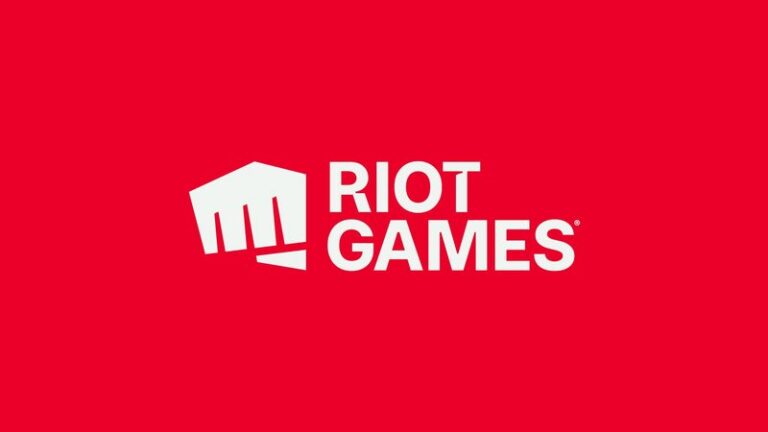
To understand the seriousness of the situation, we need to go straight to the source: Riot Games’ official documents. The company has a very clear and strict stance against all forms of boosting. This isn’t just a suggestion; it’s a hard rule written into the legal agreements every player accepts when creating an account.
The Terms of Service (ToS) Are Clear
The foundation of the ban on boosting lies in the fundamental rule of account ownership. In the Riot Games Terms of Service, it is explicitly stated:
“You can’t share your account or Login Credentials with anyone. You can’t sell, transfer or allow any other person to access your account or Login Credentials, or offer to do so.”
This language leaves no room for interpretation. Solo boosting, where you willingly give your login details to someone else, is a direct violation of this core policy. From Riot’s perspective, only the person who created the account is allowed to play on it.
The Code of Conduct Puts Boosting on Par with Hacking
Beyond the legal jargon of the ToS, Riot also has a more player-friendly Code of Conduct. In this document, the company lists behaviors the community rejects. Under the “Cheating” category, boosting is listed alongside the most serious offenses:
Cheating: Third party exploits, hacks, bug abuse, account sharing, account boosting.
Riot Games officially equates boosting with using cheat programs. To them, there’s no difference between gaining an unfair advantage with a script and gaining one by having a better player play for you. In both cases, you are damaging the competitive integrity of the game and achieving a rank you didn’t earn.
The Consequences and Punishments
Riot doesn’t just forbid boosting; they actively enforce these rules with specific and severe punishments. If an account is found to be involved in MMR boosting (as either the booster or the one being boosted), the following penalties apply:
- Account Suspension: Your account will be suspended for 14 to 180 days, depending on the severity and frequency of the offense.
- Honor Level Reset: Your Honor level will be dropped to 0, meaning you lose access to all Honor-related rewards like key fragments and capsules.
- Removal of Seasonal Rewards: You will be ineligible to receive any ranked rewards for the season. This includes the Victorious skin (for Gold+ players), profile borders, and icons.
- Permanent Ban: If you are caught a second time, your account will be permanently banned from League of Legends with no chance of recovery.
It’s important to understand that for Riot, fighting boosting isn’t just about fairness; it’s about protecting their game and community. Every boosted player who lands in a high-elo match they don’t belong in ruins the game experience for at least nine other people. They can’t keep up, they make poor decisions, and they become a liability for their team. This creates toxicity, frustration, and can ultimately drive legitimate players away from the game. By punishing boosting, Riot is protecting the health of its community and its business.
The Real Risks of Boosting: What Can (and Probably Will) Go Wrong
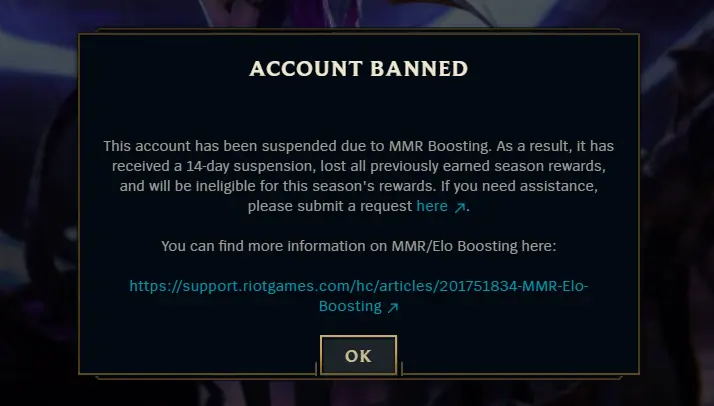
The official punishments from Riot are just the tip of the iceberg. When you decide to get boosted, especially through an unverified service or a random person online, you’re stepping into a minefield of potential disasters that are often far worse than a temporary ban.
Risk #1: Losing Your Account Forever
This is the most common and heartbreaking scenario. You find a “booster,” agree on a price, and hand over your login details. They log in… and you never get back in. The scammer immediately changes the password and associated email, seizing full control of your account.
What happens next? Your account, with all its skins, champions, and years of memories, is put up for sale on a black market website. You’re left with nothing: no account, no money, and almost no recourse. If you contact Riot Support, you’ll face the harsh reality that you willingly violated the primary rule by giving your credentials to a third party. Proving you’re the original owner becomes nearly impossible, and in most cases, the account is lost for good.
Risk #2: Financial Scams and Malware
Even if the booster doesn’t intend to steal your account, the risks don’t disappear. The internet is filled with fraudulent sites and individuals who will simply take your payment and vanish, blocking you on all platforms. You lose your money and get nothing in return.
There’s also a technical threat. Some “boosters” might ask you to install a special program, claiming it’s for “VPN protection” or to “avoid a ban.” In reality, this could be malicious software: a keylogger that steals passwords for your other online accounts, or ransomware that locks your computer until you pay a fee.
Risk #3: A Ruined Gameplay Experience
Let’s say you get lucky. You find a legitimate booster, they don’t steal your account, and they successfully take you from Silver to Diamond. Congratulations, the real nightmare is about to begin. Playing at a rank you haven’t earned isn’t fun; it’s torture.
You will be the weakest link in every single game. Opponents who are actual Diamond-level players will dominate you in lane, out-jungle you, and outplay you in teamfights. You’ll die repeatedly, feel lost on the map, and struggle to keep up with the game’s pace. Your teammates will quickly identify you as “boosted” and unleash a torrent of negativity and flame. You’ll lose game after game, and the rank you paid for will start to disappear.
Worse yet is what happens to your hidden MMR. A long losing streak will cause it to plummet. Even when you fall back to your original rank, your MMR will be so damaged that you’ll gain pathetic amounts of LP for a win and lose double or triple that for a loss. Climbing out of that hole will be even harder than it was before the boost.
Risk #4: Social Reputation
Within the League of Legends community, being “boosted” is a mark of shame. If your friends or teammates find out your rank is bought, not earned, it can lead to ridicule, loss of respect, and even being kicked from your friend group. Nobody wants to play with someone who cheated their way up and now ruins games for others.
To put it all in perspective, here’s a breakdown of the threats.
Risk Type | Description | Likelihood (with unvetted service) | Consequences |
Riot Punishment | Temporary or permanent ban, loss of rewards, Honor reset. | Medium -> High | Loss of access to the game and seasonal rewards |
Account Theft | The booster changes your login info and sells your account. | High | Complete loss of account, skins, and progress |
Financial Scam | You pay for a service that is never delivered or is incomplete. | Very High | Loss of money |
Destroyed MMR | After the boost, you will lose constantly, tanking your MMR below its original point. | Guaranteed | Climbing becomes even more difficult |
Toxic Gameplay | Playing at a high rank will be frustrating, difficult, and not fun. | Guaranteed | Loss of enjoyment from the game |
The Psychology of Boosting: Why Do Players Do It?
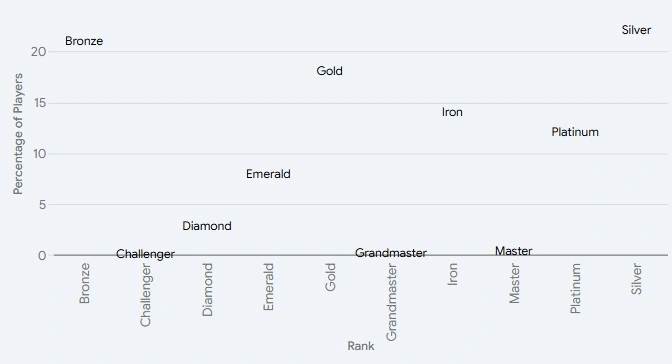
Despite the clear risks and Riot’s explicit ban, the boosting industry thrives. To understand why players continue to use these services, we need to look beyond simple laziness and examine the powerful psychological drivers that many gamers experience.
The Myth of “Elo Hell”
This is, without a doubt, the number one reason. A player stuck in a low or mid-tier rank genuinely believes their personal skill is much higher. In their mind, every loss is due to external factors: bad teammates, trolls, AFKers, and inters. They think, “If I just had a decent team, I’d easily be in Platinum or Diamond.”
For this player, boosting isn’t cheating; it’s a way to “correct an injustice.” They aren’t just paying for a rank; they’re paying to break through the barrier of “bad teammates” and land at the tier where they feel they truly belong. They believe that once they’re there, they’ll finally be able to showcase their real talent.
However, there’s a fundamental paradox here. The player claims their teammates are “impossible to carry” and are the reason they can’t win. Yet, they hire a booster who, playing at the exact same rank with the exact same pool of “impossible” teammates, manages to win consistently. The very success of the boost proves that the problem was never the team, but the skill of the original player. Realizing this paradox is the first step toward genuine improvement.
The Lure of Rewards
Every season, Riot Games awards players who reach Gold rank or higher with an exclusive “Victorious” skin. This skin can’t be bought or obtained any other way—it must be earned in ranked play. For many players, especially those who don’t have hundreds of hours to grind, boosting becomes a simple transaction to get the desired cosmetic. They may not even intend to play at their new rank; they just want the skin for their collection.
Social Pressure and Bragging Rights
In the League community, rank is often seen as a status symbol. A shiny Diamond or Master border on your profile is a source of pride and something to show off to friends. Some players order a boost simply to be able to say, “I’m a Diamond player,” even if they’ve never won a single game there themselves. It’s a shortcut to boosting their self-esteem and appearing more skilled within their social circle.
The Dunning-Kruger Effect
This psychological phenomenon perfectly describes the mindset of many players trapped in “Elo Hell.” The effect states that people with low ability at a task tend to overestimate their ability.
In League, this means a player who makes constant strategic and mechanical mistakes is often unaware of them. They don’t see their own errors but are hyper-aware of every mistake their teammates make. This creates a skewed perception of their own skill and fuels the belief that they “deserve a higher rank.” Boosting becomes a way to validate this belief, when in reality, it’s just an expensive illusion.
The Alternative to Boosting: How to Actually Climb (and Get Better)
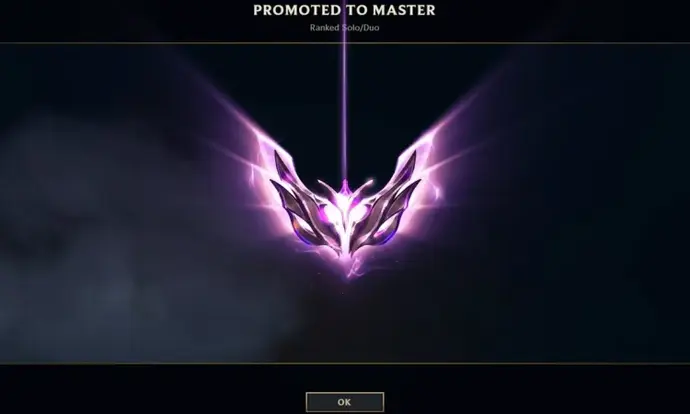
So, we’ve established that boosting is a risky, dishonest, and ultimately self-defeating path. But what if you genuinely want to rank up and feel like you’ve hit a wall? The good news is that climbing out of “Elo Hell” is entirely possible. It takes time and effort, but the result—a real improvement in your skill and a rank you truly earned—is far more satisfying than any purchased border. This section is your game plan.
Step 1: Focus is Key. Pick 1 Role and 2-3 Champions
The biggest mistake that “stuck” players make is trying to play everything. One day you’re top, the next you’re jungle, the day after you’re support. You switch champions every game based on the meta or your mood. This is a recipe for stagnation.
To improve, you need to specialize. Pick one role that you genuinely enjoy and commit to it. Then, choose 2-3 champions for that role and play them almost exclusively. Why is this so important?
- Muscle Memory: By spamming one champion, their mechanics become second nature. You no longer have to think about how to execute a combo; your hands just do it.
- Deep Matchup Knowledge: You’ll learn how your champion fares against every possible opponent. You’ll know when you can fight and when you need to play safe and farm.
- Freeing Up Brain Power: When you don’t have to focus on your champion’s mechanics, your mind is free to concentrate on more important things: watching the minimap, tracking the enemy jungler, and making smart macro decisions.
A jack of all trades is a master of none. Become an expert in one small area, and your rank will follow.
Step 2: The Economy Wins Games. Learn to Farm (CS)
Many low-elo players are obsessed with kills. They constantly look for fights, take unnecessary risks, and often die chasing a single frag. But in League of Legends, there’s a much more reliable and safer source of gold: minions (or “creeps”).
Remember this simple rule: 15-20 CS (creep score) is roughly equal in gold to one kill. Consistent, high-quality farming is the foundation of your power. A player with 0 kills but 40 more CS than their opponent will have a significant item advantage.
Set a clear, measurable goal for yourself. For example, aim for at least 6 minions per minute (cs/min). Go into the practice tool and just last-hit minions for ten minutes a day. This will do more for your climb than playing another tilted ranked game.
Step 3: Play the Map, Not Just Your Lane. Objectives > Kills
Kills don’t win the game; destroying the enemy Nexus does. And the path to the Nexus is paved with objectives: towers, inhibitors, dragons, and Baron Nashor.
Stop thinking only about your lane. Constantly ask yourself questions:
- Where is the enemy jungler? If they’re on the other side of the map, can I play more aggressively?
- Is Dragon spawning soon? Should I push my wave and rotate to help my team?
- We just won a teamfight. What can we get for it? A tower? Baron?
A game won through smart map control and objective focus is far more consistent than one that relies on random skirmishes.
Step 4: Become Your Own Coach. Analyze Your Replays
This is the single most powerful but most underutilized tool for improvement. The League client allows you to watch a replay of any of your recent games. Use it.
Watching your own games from a neutral perspective reveals mistakes you’d never notice in the heat of the moment. Focus on your deaths. Every time you die, pause the replay and ask, “Why did I die here? Could I have prevented this? What should I have done differently?” Maybe you didn’t look at the map. Maybe you walked into an unwarded jungle. Maybe you fought without a key ability or ultimate.
Analyzing one of your losses will teach you more than playing five more games on autopilot.
Step 5: Learn from the Best
Watch streams and YouTube videos of high-elo players who main your role and champions. But don’t just watch passively—analyze actively. Try to understand not what they’re doing, but why they’re doing it. Why did they back at that specific time? Why did they buy that item? Why did they place a ward in that exact spot? The answers to these questions are the keys to understanding high-level gameplay.
This path is harder and longer than paying for a boost. But every step you take will be your own. Every division you climb will be earned. And that will bring a sense of pride and accomplishment that no amount of money can buy.
Conclusion: Your Rank Is a Journey, Not a Destination
We’ve taken a deep dive into the world of Elo boosting in League of Legends. You now know it’s not a magic bullet, but a risky and expensive service that directly violates Riot Games’ rules. Behind the shiny border and coveted rank icon lie serious threats, from permanent bans and account theft to a completely ruined gameplay experience and a tarnished reputation.
The psychological drivers—the frustration of “Elo Hell,” the desire for rewards, and social pressure—are understandable. However, boosting doesn’t solve these problems; it creates new, more severe ones. It doesn’t make you a better player. On the contrary, it throws you into an environment where you’re guaranteed to fail, ultimately setting you back even further.
The most important takeaway is this: your rank in League of Legends is not the destination. It’s a reflection of your journey, your effort, your wins, and your losses. It’s a measure of your growth. True satisfaction comes not from a purchased icon you didn’t earn, but from the knowledge that you improved. It comes from that clutch teamfight you won with a smart play, and from that promotion series you conquered with your own skill.
The climb from Bronze to Diamond can be long. But every victory along the way will be truly yours. Don’t look for shortcuts. Focus on improving yourself, learn from your mistakes, and your rank will become more than just a picture on your profile—it will be a symbol of your achievement.
FAQ
What does boosting mean in gaming?
It means legally or illegally, using superior experience and skill to bring lower ranked accounts to higher ranks.
How do I increase my rating in League of Legends?
You have to win more ranked games than you lose.
Can I get banned for elo boosting in LoL?
If you get caught by Riot Games – yes.
